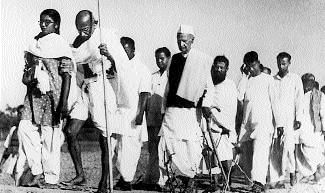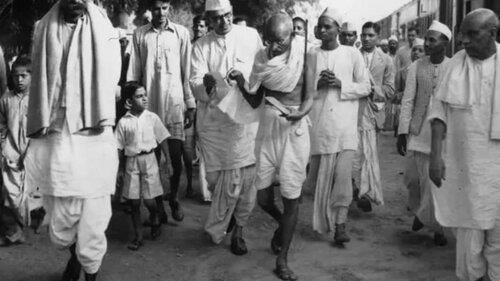|
Card: 1 / 30 |
What motivated Rajkumar Shukla to approach Gandhi, and what specific issues was he seeking to address in Champaran? |
|
Card: 2 / 30 |
Rajkumar Shukla was motivated by the oppressive conditions faced by the sharecroppers in Champaran, particularly the unjust demands of British landlords who forced them to grow indigo and surrender their entire crop as rent. |
|
Card: 3 / 30 |
Gandhi faced resistance from British officials in Champaran. Describe how he responded to this resistance. |
|
Card: 4 / 30 |
Gandhi responded to the resistance by gathering evidence of the injustices faced by the sharecroppers and choosing to stay in Champaran despite attempts to evict him. He faced trial, which garnered massive support from the local populace.  |
|
Card: 5 / 30 |
The Champaran peasants were primarily affected by the demand to grow which crop, and how did the introduction of synthetic indigo impact their situation? |
|
Card: 6 / 30 |
The Champaran peasants were primarily affected by the demand to grow indigo. The introduction of synthetic indigo made the landlords' demands obsolete, leading them to seek compensation for releasing the peasants from their agreements, which many peasants had signed without understanding their implications. |
|
Card: 7 / 30 |
Gandhi's involvement in Champaran led to the initiation of which types of reforms in the villages? |
|
Card: 8 / 30 |
Gandhi's involvement in Champaran led to the initiation of social reforms and educational improvements in the villages, addressing not only the immediate grievances but also the broader issues of social justice and literacy. |
|
Card: 9 / 30 |
True or False: Gandhi's actions in Champaran resulted in immediate relief for the sharecroppers without any significant resistance from the British authorities. |
|
Card: 10 / 30 |
False. Gandhi faced significant resistance from the British authorities, including attempts to intimidate him and evict him from Champaran. However, he persisted, which ultimately led to successful negotiations for the sharecroppers. |
|
Card: 11 / 30 |
What significant outcome resulted from Gandhi's non-violent protest in Champaran? |
|
Card: 12 / 30 |
The protest led to the appointment of an official commission that investigated the issues faced by the peasants and resulted in landlords refunding part of the money to them.  |
|
Card: 13 / 30 |
Gandhi's approach in Champaran included addressing social issues such as ___ and ___. |
|
Card: 15 / 30 |
True or False: Gandhi accepted financial assistance from Charles Freer Andrews during the Champaran movement. |
|
Card: 16 / 30 |
False. Gandhi rejected help from Charles Freer Andrews, emphasizing self-reliance. |
|
Card: 17 / 30 |
The Champaran movement set a precedent for future civil rights movements by showcasing Gandhi's method of ___ and his commitment to ___. |
|
Card: 19 / 30 |
How did Gandhi's actions in Champaran reflect his philosophy of intertwining political action with social service? |
|
Card: 20 / 30 |
Gandhi not only focused on the political rights of the peasants but also worked to improve their living conditions through education, sanitation, and medical aid. |
|
Card: 22 / 30 |
The central theme revolves around standing up against injustice, empowering the oppressed, and promoting self-reliance. |
|
Card: 23 / 30 |
The message of the story emphasizes that ___ actions can lead to significant changes. |
|
Card: 26 / 30 |
Civil disobedience refers to nonviolent resistance against unjust laws, highlighting the importance of fighting for justice. |
|
Card: 27 / 30 |
True or False: The story suggests that only extraordinary people can create change. |
|
Card: 28 / 30 |
False - The story suggests that even ordinary actions can lead to significant changes. |
|
Card: 30 / 30 |
Liberation refers to freedom from oppression, emphasizing the need for empowerment and self-sufficiency. |























